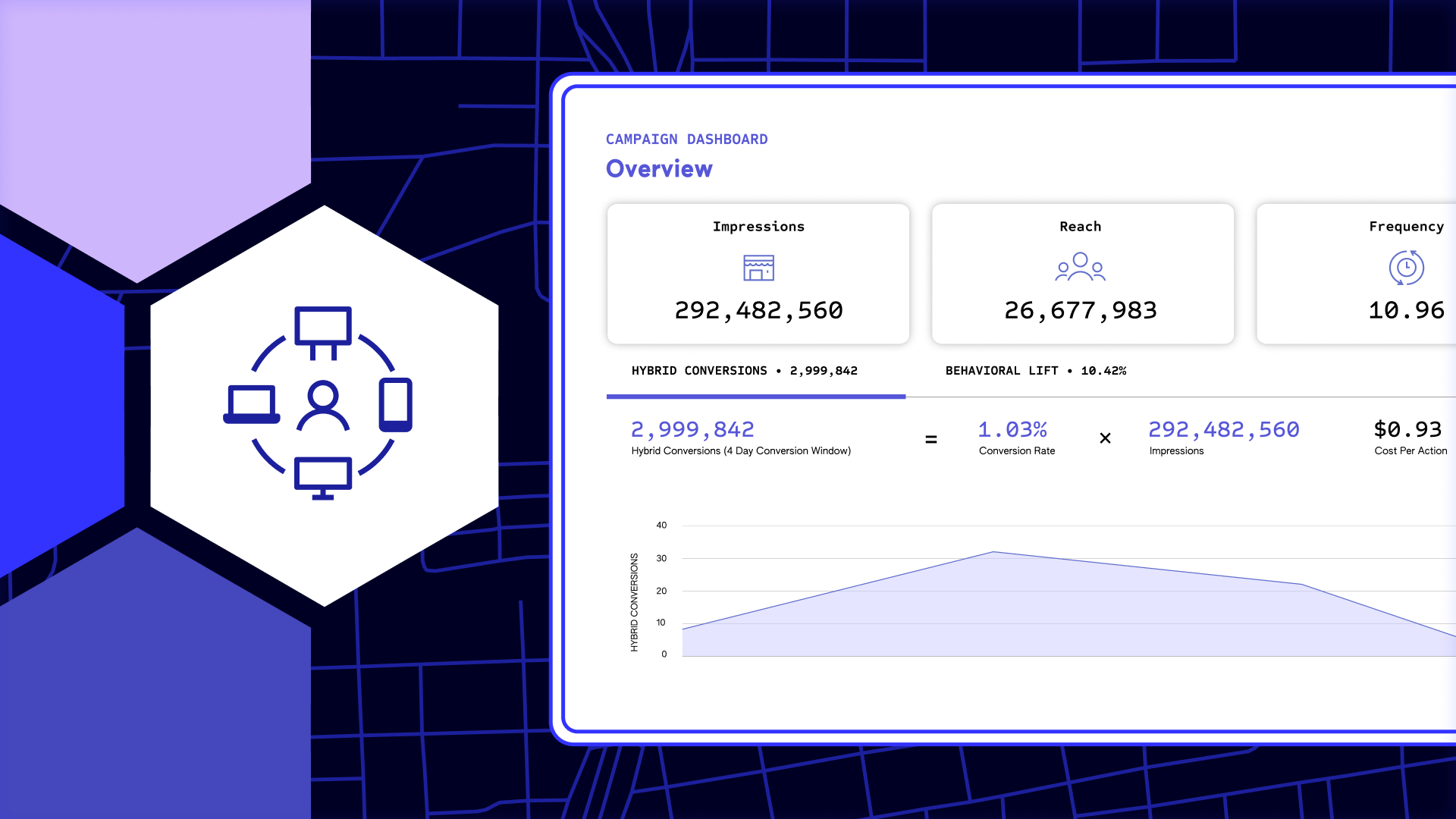Once you have defined your campaign goals and created a viable creative strategy, your Foursquare Attribution report will help you glean valuable insights into overall performance and media efficiency. Ultimately, you’ll use this information to plan and optimize successful marketing campaigns in the future.
Let’s First Make Sure Your Campaign Is Optimized for Success
You can begin to optimize your campaign by creating a measurement plan. This involves establishing your definition of success, plus short and long-term goals. Here are a few questions you need to ask yourself to craft a working measurement plan and discover how to run a successful campaign.
Which Metrics Are Most Important to Our Business Goals, and How Do These Metrics Impact Planning and Optimizations?
All KPIs should directly align with your specific and measurable business goals. For example, by what percentage and when do you wish to increase your conversion rate?
Avoid vanity metrics that don’t truly signal success. Instead, choose KPIs that matter in your industry, are specific to your growth stage, and can reveal trends in your advertising to help you improve.
How Can We Better Target Our Audiences with Advertising Efforts?
Every year, $37 billion is wasted on ads that fail to engage the target audience. Developing buyer personas can help you understand their behaviors and attitudes to connect to what drives and engages them. Buyer personas will help you focus your content on your target audience and make market research more efficient.
How Are Our Channels Working Together?
An omnichannel approach allows customers to interact with multiple sales and media channels for a seamless, unified experience. Omnichannel solutions are proven to increase personalization and drive conversions.
To make omnichannel solutions work well, you can look at what has worked in the past and focus on your best-performing channels. Take some time to map your customer journey to see what’s driving them toward your product or store. It’s also a good idea to invest heavily in a reliable data source for concrete consumer insights.
What Is the Best Budget Allocation for Each Channel?
Budget allocation, like every other aspect of advertising, begins with goals. Look at what has worked in the past, and use buyer personas to target your campaigns to maximize ROI. Using the 70-20-10 rule, spend 70% of your budget on channels proven to work for you in the past, 20% on those that might work, and 10% on new ideas.
When advertising spend is optimized across a variety of channels, clients can increase the total impact of their ad spend on incremental store visits. Some have even seen more than a 500% increase.
What Creative Messages and Tentpoles Do We Lean into?
Your creative concepts should align with your strategy, goals, and brand. Make sure your creative messaging grabs attention and pulls people in emotionally. Campaigns should specifically resonate with your target audience and always focus on benefits rather than just features.
Are We Investing in the Most Effective Markets?
Analyzing market trends is critical to making informed decisions about investing. For that reason, you should make sure to stay up to date on all the latest industry research reports.
Keep a close eye on both influencers and competitors in your sector, and segment your customers to uncover hidden trends you can target. Additionally, always make the most of digital tools and analytics such as Foursquare Attribution tracking to help gain important insight.
What Is the Optimal Frequency Each Season to Reach Our Audience?
You’ll know you’ve prioritized the correct metrics when you can use the data you gleaned from measuring KPIs to create meaning. Based on your original goals, the data should demonstrate whether you succeeded and help you understand how to move toward campaign optimization.
Post-Campaign Analysis
Once your campaign is over, it’s time to dig into your Attribution report for performance insights that help you optimize for future campaigns.
Analyze Campaign Results
Foursquare Attribution creates a test-and-learn cycle where you analyze data to understand which media channels and strategies resulted in incremental visits and revenue. In this stage of the process, your primary KPIs include the following:
- Behavioral lift: likelihood that visitors exposed to advertising are converting at a higher-than-expected rate
- Incremental store visits: number of projected incremental or net-new visits driven by the media buy
- Conversion rate: number of ad-exposed visitors as a percentage of all impressions
- Cost per incremental visit (CPIV): cost associated with driving incremental visits
- Cost per exposed visit (CPEV): cost associated with driving total attributed visits
A low CPIV and CPEV signifies that your media spend is highly optimized and efficient.
Dig Deeper if There Is No Positive Result
If your results do not indicate success in driving real-world visits, you must do the following:
- Validate campaign performance by examining the report for performing areas
- Optimize conversion rate or cost per visit to show you’ve reached the right market
- Use lift indices (demographic, geographical, etc.) to find opportunity areas
- Consider the insights you are trying to derive: the impact of one type of messaging creation versus another
If your campaign does not yield the expected results, these steps will drive continuous improvement as you continue to learn how to run a successful campaign.
Take a Holistic Approach to Optimization
Campaign optimization should always be done in light of your overall goals and strategy. A few tips for building a holistic approach include the following:
- Working with Foursquare to create custom reports
- Regularly review Foursquare reporting to track trends in-flight
- Seek valuable insight into well-performing areas when campaign lift is absent
- Focus on a few adjustments at a time to narrow down performance impact
- Shift budgets slowly to avoid making significant changes all at once
- Optimize toward tactics with strong confidence levels (above 90%)
In taking these steps, you’ll be better equipped to progress toward success as you continue the test-and-learn cycle.
Using Foursquare’s Attribution to Drive Success
Successful marketing campaigns start with knowing your goals and how to measure them. However, proper analysis requires accurate data that provides you with the insight you need to make sound decisions about your campaigns. Foursquare’s Attribution helps you understand the impact of your advertising by providing critical insight into the consumer’s journey from ad to store visit.
Contact Foursquare to learn how Attribution can help you leverage the power of multi-touch attribution tracking to optimize your ad spend and connect with your customers through highly effective advertising.



